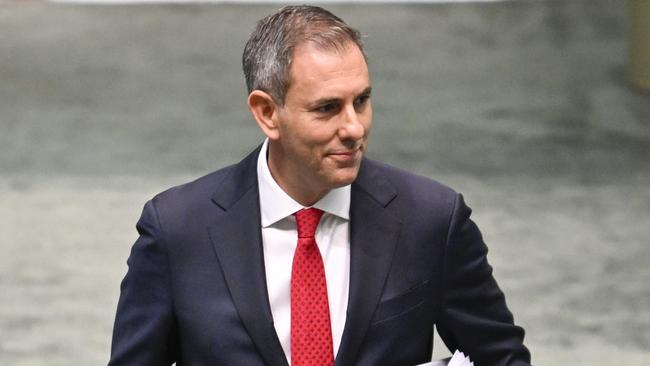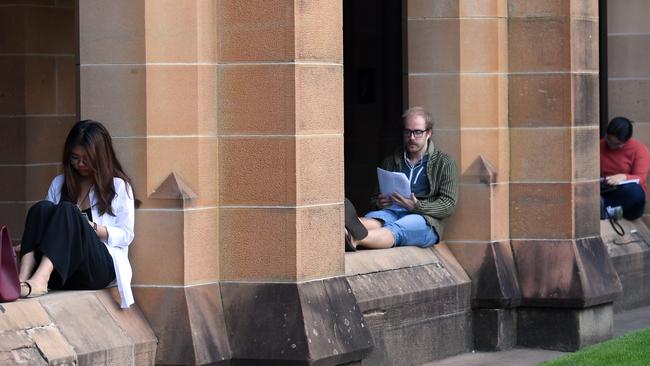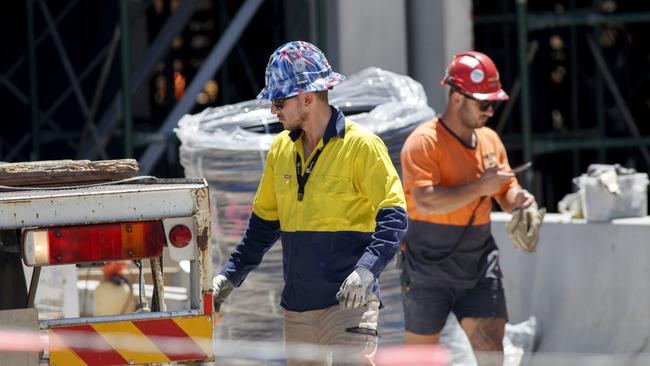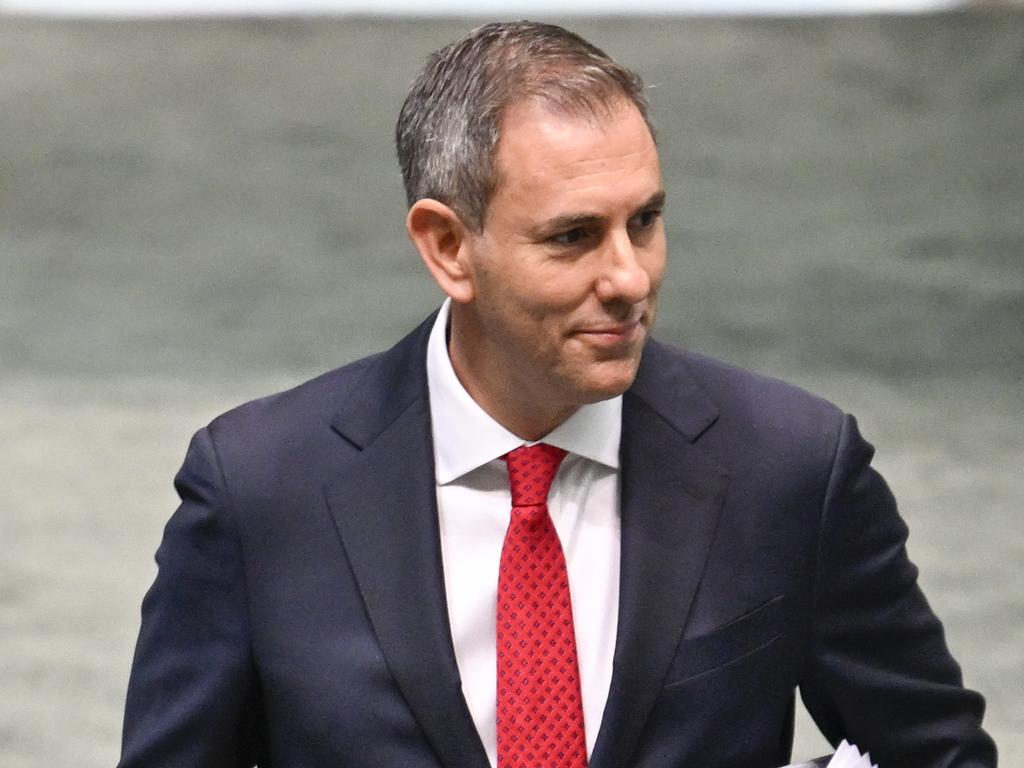Jim Chalmers’ easy home lending to win younger voters
The Treasurer has instructed financial regulators to soften home-lending rules for millions of Australians, in a pre-election move to help achieve Labor’s 1.2 million new homes target and woo younger voters.

Jim Chalmers has instructed financial regulators to soften home-lending rules for millions of Australians with university debts and developers who can’t guarantee “100 per cent pre-sold apartments”, in a pre-election move to help achieve Labor’s 1.2 million new homes target and woo younger voters.
After the rare intervention by the Treasurer ahead of the election, the Australian Prudential Regulation Authority and Australian Securities & Investments Commission will immediately launch consultations and implement changes to help “unlock more finance from the banks”.
Following discussions with APRA chair John Lonsdale last November and ASIC chair Joseph Longo this month, Dr Chalmers on Tuesday spoke to the chief executives of the major banks about the changes.
The shake-up of lending rules to break down barriers for first-home buyers and boost the construction of new units adds to Labor’s existing $32bn Homes for Australia election plan. It also comes ahead of expected Coalition housing policies focused on unlocking housing finance.
The Australian understands banks will continue to apply strict lending protections put in place following the global financial crisis and Kenneth Hayne’s royal commission into misconduct in the banking, superannuation and financial services industry.
Under the overhaul, APRA will tell banks they can exclude Higher Education Loan Program (HELP) repayments from serviceability assessments where they expect a borrower to pay off their debt in the near-term.
APRA will also change Debt to Income reporting definitions so that HELP debts are not treated as debt for reporting purposes, recognising ‘the income-contingent nature of HELP debts’.
While the HELP debt changes are expected to boost the borrowing capacity of first-home buyers by tens of thousands of dollars, the Australian Banking Association has previously said the move is no “panacea” to fix housing affordability and that caution must be applied to ensure young people can service their mortgages and not be put into financial difficulty.

The lending rule changes continue Labor’s pre-election play for younger voters, with the Albanese government already cutting almost $20bn from student loan debts of about three million Australians.
Amid flatlining apartment construction starts and industry warnings that a shortfall in multi-unit blocks will blow up Anthony Albanese’s promise to build 1.2 million new homes by mid-2029, Dr Chalmers has also delivered a shot in the arm for smaller developers struggling to access finance. The Treasurer has asked APRA to update and clarify regulatory guidelines designed to turbocharge construction of more units across the country. The regulator will communicate to banks that, while it expects them to “consider the extent of presales as part of prudent credit risk management”, the banking regulator does not expect 100 per cent pre-sales.
Dr Chalmers, who expects the banks to continue applying responsible lending protections, said: “These are commonsense clarifications that will help more Australians into a home.
We’re tackling this housing challenge from every possible angle. People with a HELP debt should be treated fairly when they want to buy a house and we’re working with the regulators to make sure they are,” Dr Chalmers said.
“By unlocking more finance from the banks we’ll see more housing projects get off the ground more quickly.”
ABA chief executive Anna Bligh, whose members include CBA, ANZ, Westpac and NAB, said banks supported responsible lending rules to protect borrowers and ensure they can repay their loans.
“However, there is always merit in carefully considered updates to regulatory guidance that may help some Australians safely access more credit,” Ms Bligh said. “Whilst the challenges of reducing barriers to home ownership won’t be solved by one single factor, these clarifications should assist in unlocking more credit for some of those looking to enter the property market.”

The Albanese government’s move to help more young Australians and developers access loans and finance comes ahead of the Reserve Bank’s highly anticipated board meeting next week. The central bank is widely expected to enter a new phase of its inflation battle by cutting the cash rate for the first time since 2020.
Amid rising hopes inside the government that the central bank will cut the 4.35 per cent cash rate, which is at a 12-year-high, Peter Dutton on Tuesday said RBA governor Michele Bullock should not “feel pressured” to cut rates if the economic conditions are not suitable.
“I hope for the sake of families and small businesses that there is an interest-rate cut, but that’s a decision for the Reserve Bank governor and she shouldn’t feel pressured one way or the other,” the Opposition Leader said. “You can cut rates and then find that they’ve been cut too early, and the Reserve Bank will have to increase rates later on.”
Mr Dutton, who has been accused by Dr Chalmers of wanting to keep the cash rate on hold in order to gain an electoral advantage, praised Ms Bullock’s independence. “She will do what is in our country’s best interest, and she’ll do that based on looking at the economic settings and what is happening in the economy that is relevant to her consideration,” he said.
The Coalition, which has made a number of housing election policy commitments, has proposed to allow first-home buyers to withdraw 40 per cent of their superannuation savings – up to $50,000 – to assist in the purchase of a property.
Under the plan, first homebuyers would have to later repay the withdrawn amount, plus a share of the capital gain made on the property, when they later sell the house.
Removing HELP debt restrictions was raised by the Albanese government in the Universities Accord released last year. The accord called for a review of bank lending practices to “ensure banks recognise that HELP loans are not like other types of loans and are not treated in a way that unduly limits peoples’ borrowing capacity for home loans”.
According to 2023-24 data, 791,000 Australians had HELP debts of up to $10,000 and 585,000 had student loan debts between $10,000 and $20,000. Almost 280,000 Australians have student debts valued at more than $60,000.
With an election due by May 17, Labor MPs are hopeful that the RBA will cut rates at its February 17-18 board meeting.






To join the conversation, please log in. Don't have an account? Register
Join the conversation, you are commenting as Logout